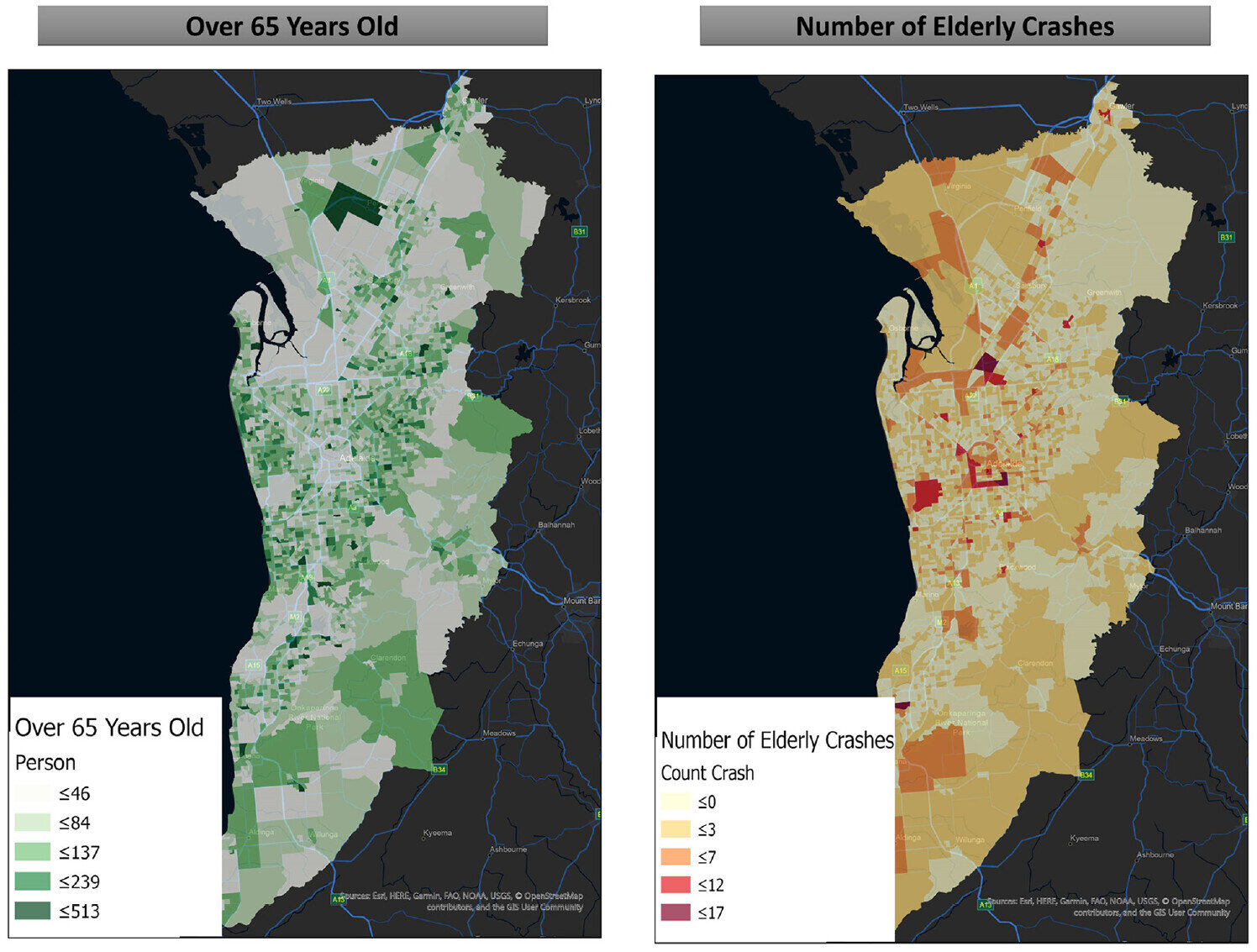
Researchers from the Flinders Health and Medical Research Institute at Flinders University, under the direction of Dr. Ali Soltani, compared crash data before and after COVID-19 to ascertain the effect of the pandemic on the frequency and locations of crashes involving older people. Their goal was to examine the patterns of road crashes suffered by specific socially disadvantaged groups.n
‘Transportation Research Record: Journal of the Transportation Research Board’ has released a study titled ‘Post COVID-19 Transformation in the Frequency and Location of Traffic Crashes Involving Older Adults.nn
older persons reported by the police in comparison to the same time frame prior to the epidemic. The COVID-19 lockdown travel restriction regulations were assumed to have a favorable impact on this.nn
However, although reduced traffic volume resulted in fewer crashes overall, the severity of crashes was slightly raised as the crash hotspots shifted to higher speed zones.n
“The changes in crash occurrence were strongly related to time and certain spatial characteristics of the environment,” says Dr. Soltani.n
Cases with three types of characteristics were prominent in the change: pedestrian?vehicle conflicts in areas of mixed land use; proximity to crash high-risk corridors; and distance from public transit stations in areas controlled by traffic-calming strategies.n
Age-related factors tend to increase risk of crash involvement in old age, older people are more vulnerable to injury than younger adults, and the proportion of older people in the population is increasing. Temporal and spatial factors also affect road crash risk, and this study provides insights into spatial patterns of road crashes involving road safety.n
“It is vital to consider variations in the built environment regarding their impact on crashes within metropolitan areas,” says Dr. Soltani.n
He adds that improving the legibility of appropriate traffic signs at mixed-use zones in Adelaide’s inner suburbs that inform, warn and control speeds are essential for improving the visual knowledge and understanding for people to best avoid crashes.n
The pandemic’s influence in reducing the number of crashes could also influence management policies for new ways of employing telecommunications throughout Australia to prevent unnecessary commuting. This would necessitate empowering the 65+ age population by increasing their digital literacy and facilitating online shopping, recreation, medical and health services and employment options.n
“The results of the study could assist academics and policy makers in Australia to better understand multi-dimensional implications of the built environment on the road safety of the elderly,” says Dr. Soltani.
More information:
Ali Soltani et al, Post COVID-19 Transformation in the Frequency and Location of Traffic Crashes Involving Older Adults, Transportation Research Record: Journal of the Transportation Research Board (2023). DOI: 10.1177/03611981231163866
